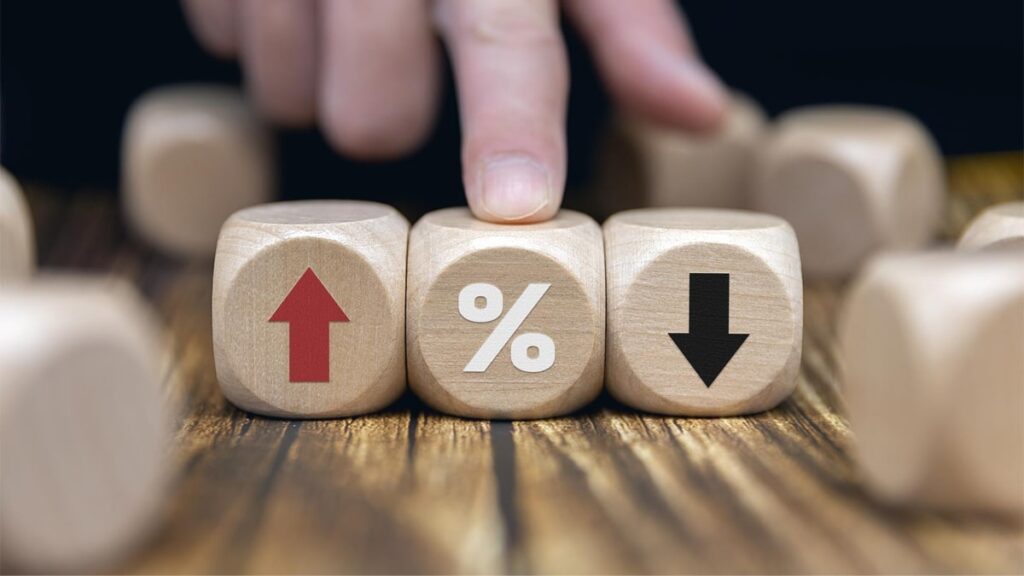The Repo Rate is the rate at which commercial banks can borrow money from the RBI by selling government securities.
Repo has a full form called Repurchase Agreement or Repurchasing Option which is shortened to Repo for convenience. It is very essential rate as the commercial bank that is short of money or needs liquidation takes a loan from the central bank.
The lending rate at which the commercial bank offers the bank a loan is called the Repo Rate and RBI along with the Ministry of Finance decides the repo rate to maintain the economy.
The current repo rate in India, fixed by RBI is 6.50% on 8th February 2023.
Inflation is the biggest problem that an economy faces hence, it has to be maintained, RBI uses the repo rate as one of the tools for maintaining inflation by controlling the liquidity of money in the market.
If you want to make decisions like getting a Home loan, investing in the market, and making other important financial decisions, you’ll have to look at the macro situation of the economy.
In this article, we will discuss what is Repo rate, How does it work, what is the current repo rate in India, what is reverse repo rate and much more.

Table of Contents
How Does Repo Rate Work?
The flow of money in an economy dictates the economic demand and creates an outlook for the consumption and production of goods and services.
When there is too much money pumped into the market, the competition to get the goods and services goes up which increases the demand for those products.
The basic economic principle states that as the demand goes up, the price goes up as well hence, the commodity prices of the things go up giving rise to inflation.
The inflation then spreads throughout the economic activities and hence requires careful measures of control which is done by Repo Rate manipulation.
The manipulation of the repo rate makes the cost of loans go up hence, the banks will lend the loans at a higher cost which restricts the end customer from getting loans due to high cost.
This will reduce the liquidity from the market hence, reducing the demand which brings down the inflation rate and the Repo Rates get stabilized.
Similarly, if there is very low inflation in an economy, then RBI reduces the Repo Rate pumping money into the market to push the growth of the country.
Current Repo Rate in India
The Monetary Policy Committee (MPC) is a committee constituted by the Central Government for setting up the repo rate.
It is led by the Governor of RBI and targets of inflation are also done by this committee. The following is the Current Repo Rate in India which the Reserve Bank of India has set-
| 10th August 2023 | Unchanged at 6.5% | Kept the repo rate constant for more than a quarter |
| 8th June 2023 | Unchanged at 6.5% | No change to the repo rate |
| 6th April 2023 | Unchanged at 6.5% | Maintained rate change in February |
| 8th February 2023 | Hiked by 25 b.p to 6.5% | Further repo rate was increased as an inflation control measure.s |
| 7th December 2022 | Hiked by 35 b.p to 6.25% | Controlling inflation was important hence, 35 b.p was increased to control the inflation. |
Historic Repo Rate
The following are the historic repo rates that you can use to find out about the repo rate changes that took place since 2010-
| Period – Date Effective from | Repo Rates |
| 8th June 2023 | 6.50% |
| 8 February 2023 | 6.50% |
| 7 December 2022 | 6.25% |
| 30 September 2022 | 5.90% |
| 05 August 2022 | 5.40% |
| 08 June 2022 | 4.90% |
| May 2022 | 4.40% |
| 09 October 2020 | 4.00% |
| 06 August 2020 | 4.00% |
| 22 May 2020 | 4.00% |
| 27 March 2020 | 4.00% |
| 06 February 2020 | 5.00% |
| 07 August 2019 | 5.00% |
| 06 June 2019 | 6.00% |
| 04 April 2019 | 6.00% |
| 07 February 2019 | 6.00% |
| 01 August 2018 | 7.00% |
| 06 June 2018 | 6.00% |
| 02 August 2017 | 6.00% |
| 04 October 2016 | 6.00% |
| 05 April 2016 | 7.00% |
| 29 September 2015 | 7.00% |
| 02 June 2015 | 7.00% |
| 04 March 2015 | 8.00% |
| 15 January 2015 | 8.00% |
| 28 January 2014 | 8.00% |
| 29 October 2013 | 7.75% |
| 20 September 2013 | 7.50% |
| 03 May 2013 | 7.25% |
| 17 March 2011 | 6.75% |
| 25 January 2011 | 6.50% |
| 02 November 2010 | 6.25% |
How Repo Rate is Decided by the Reserve Bank of India?
The Reserve Bank of India (RBI) formulates the monetary policy and framework to regulate the Indian Economy. Here is how RBI decides the repo rate-
- The Monetary Policy Committee (MPC) regularly meets every two months and discusses the economic state of the country and makes necessary changes to the key policy rates which include the repo rate. It is headed by the RBI government and contains members like Deputy Governor, and external experts.
- MPC looks at the economic data and indicators like inflation rate, growth, fiscal deficit, trade balance, etc. They also consider global economic trends and geopolitical developments for making the policy.
- RBI uses an economic strategy called Inflation Targeting to maintain price stability, specifically targeting a consumer price inflation rate. The target rate is typically around 4% with a tolerance range.
- After deciding on the repo rate, RBI announces the decision in a press release followed by conducting open market operations (OMOs) wherein buying and selling of the government securities is done at the newly decided repo rate.
What is the Reverse Repo Rate?
The Reverse Repo Rate is a rate at which the RBI borrows the money from the commercial banks. Some banks may have excess money through deposits, business profits, etc. This excess money can then be put in the RBI’s fund for an interest rate, this is called Reverse Repo Rate.
FAQ
The latest Repo Rate set by the RBI is 6.50%
The floating interest rate provided by commercial banks as an option for taking a loan gets affected by the repo rate as the floating interest rate fluctuates with the base rate change. If the base rate gets increased, your overall interest rate goes by that many base points and vice versa is also true. This makes Floating interest rates fluctuate in nature making it a little risky.
RBI increases the Repo Rate when there is increasing inflation in the country. To control inflation, RBI increases the repo rate and reduces the liquidity from the market hence, reducing the cost of goods and services and containing the inflation.
When the inflation of the country is controlled and the market is safe for increasing the money flow then the RBI decreases the Repo Rate.
I’m Shiv Kumar, a graduate with a passion for finance, marketing, and technology. My journey into finance started with a desire to understand money management and investing.
Our main goal is to empower individuals through financial education. We believe that everyone should have the opportunity to build a strong financial foundation. Whether you’re a seasoned investor or just getting started, we provide articles, guides, and resources to help you navigate the financial landscape.
I invite you to join our community of financially savvy individuals. Feel free to ask questions, engage with our content, and explore the topics that matter to you. Together, let’s take control of our financial futures.




